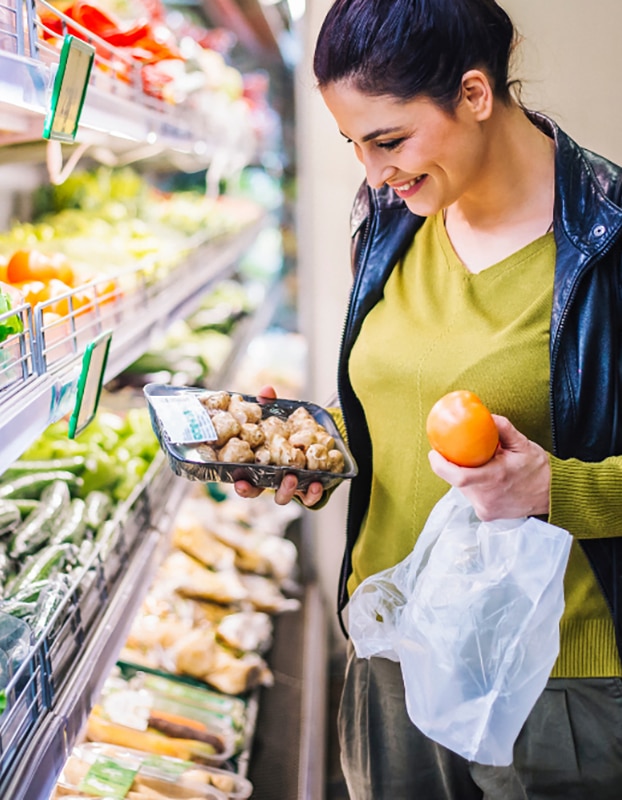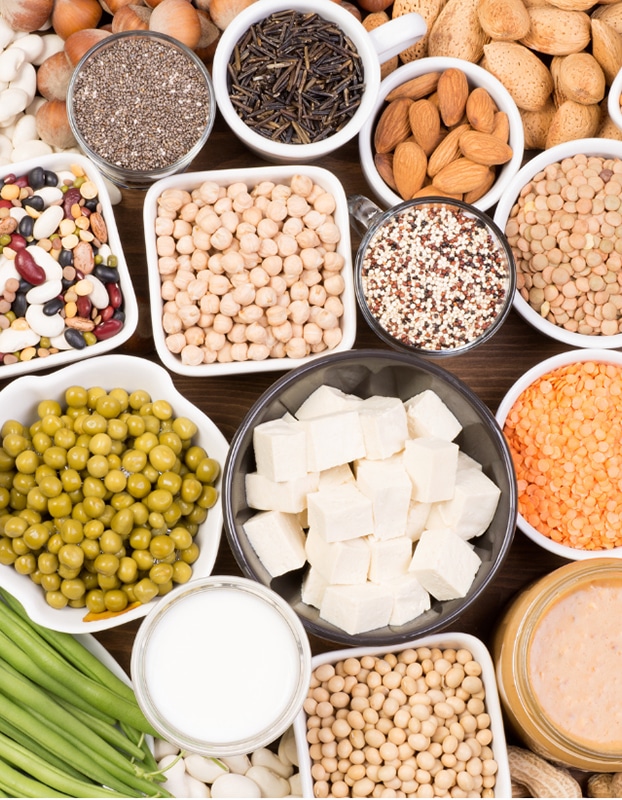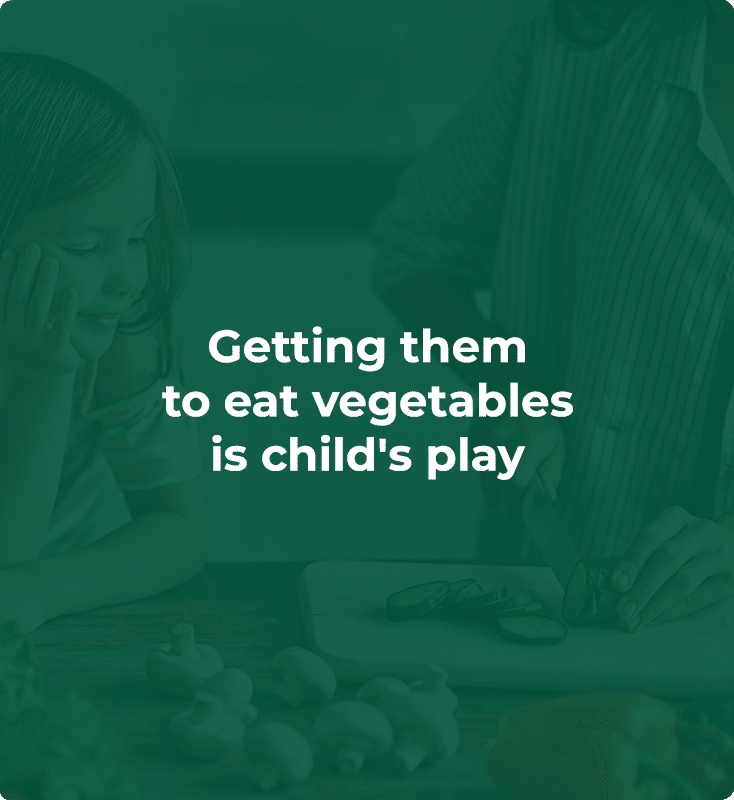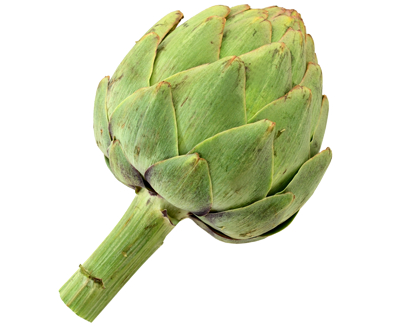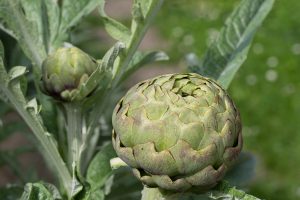Recipes we love
See all recipes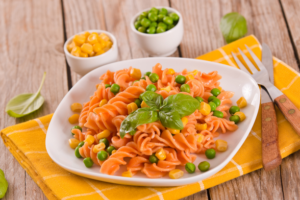
Artichoke and mushroom pizza
You don’t need a bread oven to make a pizza! And an “à la carte” pizza will keep nutritionists and c...
Artichoke heart salad and tofu with sesame
A balanced salad for a light dinner, with a little whole wheat bread, a dairy product and a fruity d...
Artichokes à la Grecque
One of those recipes that remind us that summer is on its way! - Get inspire and use this recipe to ...
Health
benefits
A heart to take
The artichoke is the original among vegetables. Its refined-tasting flesh is worth it because it is eaten in two places that are not always easy to reach…: the base of the leaves, but also its entire heart, well hidden under the hay, which must first be carefully removed before eating.
A vegetable that has fiber
The artichoke is naturally rich in fiber, particularly in inulin, a soluble fiber that gives it a slightly sweet flavor. Described as a “prebiotic,” inulin is fermented by the good bacteria in the colon. Thanks to it, they can develop and have beneficial effects on health, including regulating intestinal transit. Another advantage of inulin is that it helps to better assimilate certain minerals such as calcium and magnesium.
A palette of antioxidants
The edible parts of the artichoke contain a wide variety of antioxidants, such as certain phenolic compounds, anthocyanins and carotenoids such as beta-carotene, lutein and zeaxanthin. The latter are the subject of much research in particular in the prevention of eye diseases (cataracts, age-related macular degeneration, etc.).
The artichoke is also a source of:
- vitamin B9 (cell renewal, very interesting for pregnant women for the development of the fetus, and in growing children, as well as for convalescents)
- potassium (nervous system, muscle function, blood pressure)
- copper
- iron
- magnesium
- manganese
Nutritional
composition
When is the right
time to eat them?
The artichoke is available all year round, but its peak season runs from March to September !
Vegetable patch or
urban balcony?
The artichoke is a perennial plant, which appreciates soil rich in humus, fresh, well-drained and neutral (pH = 7), as well as sunny exposure, conditions which are difficult to achieve on a city terrace.
Choosing and
storing
To choose your artichokes well:
- When buying, carefully observe the artichoke head: the leaves, but also the stem!
- Choose dense heads, with unspotted and tightly packed leaves (or even slightly prickly for purple artichokes).
- Observe the stem carefully: a fresh stem is slightly moist and well colored. Do not cut it too quickly, it contributes to the preservation of the artichoke.
To properly store your artichokes:
- Keep them in the vegetable drawer of the refrigerator for as little time as possible. The ideal is to cook the artichoke the same day! Because it is particularly fragile, and its nutritional benefits degrade very quickly.
- Once cooked, it is strongly recommended to consume the artichoke within 24 hours. Without becoming toxic as we often hear, its organoleptic properties are altered and it is less pleasant to eat.
Tips and
tricks
The artichoke is prepared…
Raw. Only certain varieties are eaten raw: these are the small artichokes, such as “violet de Provence”, “violet de Toscane” or “tudela”. Marinated in oil or even added to a pan, or even to garnish pizza. And everything is edible!
Cooked. We cook the large artichokes, to eat only the heart and the base of the leaves. Savoring the artichoke requires little effort in the kitchen (but more in tasting): 10 to 50 minutes of steaming or pressure cooking depending on the size of the vegetable.
Tip to know if the artichoke is cooked. Pull on a leaf. If it comes off easily, the artichoke is cooked.
Artichoke goes well with…
Enjoy the artichoke heart simply cooked with a nice vinaigrette seasoned with mustard and crushed nuts and herbs, or with a spicy vegetable coulis. The artichoke heart is a choice ingredient for pizza. It goes well with pork, omelettes and salads. It works wonders in purée.
Tip: If using canned artichoke hearts, drain them well before cooking.
Remember: The artichoke flower is not edible, as is the hay.
Can everyone
eat them?
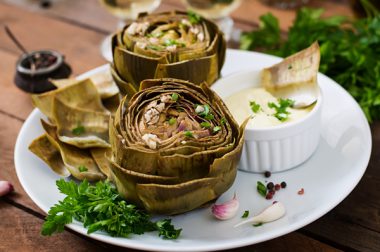
Toddlers
In puree, the artichoke can be eaten from the start of food diversification (around 6 months). Generally, it is well appreciated by babies. If this is not the case, do not force it, but offer it again a few days later. After only a few tries, its appreciation and consumption will increase.
For children, eating with their fingers and licking the leaves makes eating artichoke fun. Moreover, good to know, eating with the hands encourages the appreciation of new textures in children.
And all the others…
For the elderly, favor the consumption of artichoke bottoms (fried, pureed, or with vinaigrette), rather than leaves which are not always easy to eat for people with hearing aids.
Possible digestive problems. The presence of inulin is sometimes poorly tolerated by people with irritable bowel syndrome. In this case, seek advice from a healthcare professional.
Where do they come from?
Origins and varieties
Origins
World artichoke production is concentrated 90% in Mediterranean countries (Italy, Egypt, Spain). The rest of the production is distributed among countries with similar climatic conditions (Northern Argentina, California, New Zealand, Chile, Venezuela, Peru).
Varieties
Each region has its own varieties, ranging from white (for cooking) to purple (more tender, which can be eaten raw).



 Carott
Carott  Chard
Chard  Vegetable garden: growing lentil
Vegetable garden: growing lentil 

